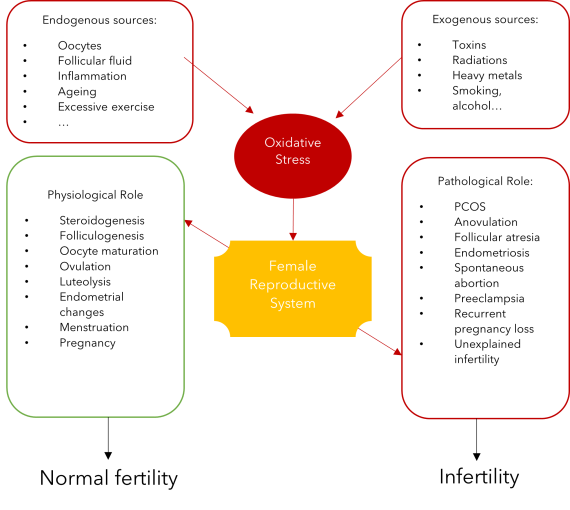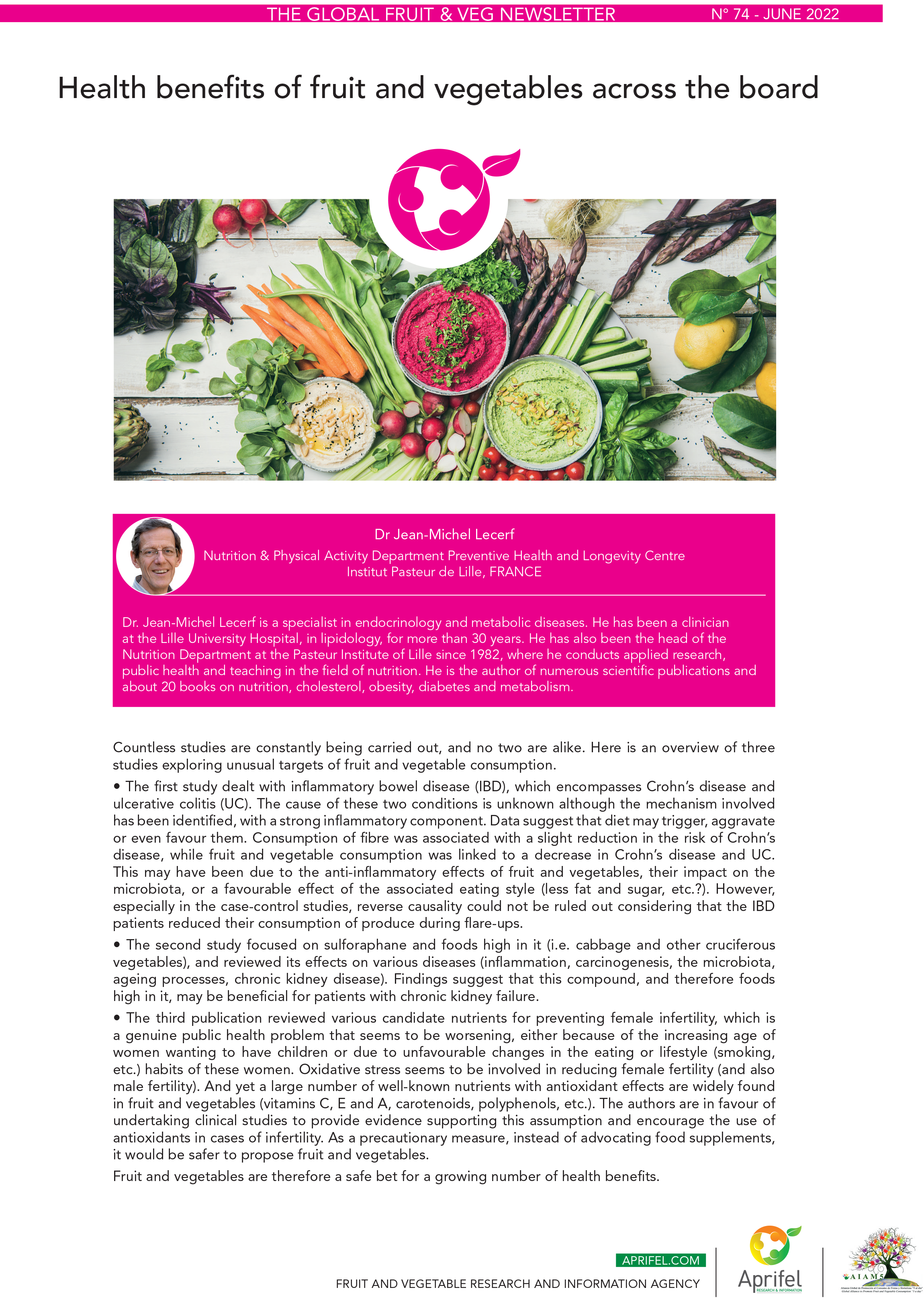The role of natural antioxidant compounds on female infertility prevention

Infertility, defined as the failure to conceive a pregnancy after a year or more of regular unprotected sexual intercourse, concerns almost 50 million of couples in the world (WHO, 2020).
With the prevalence of female infertility increasing yearly, it has become a global health issue. One of the main mediators of this condition is oxidative stress: it causes various reproductive pathologies in women such as endometriosis, preeclampsia, spontaneous abortion and unexplained infertility.
This article describes the main elements of a review conducted by an Indian team regarding the effectiveness of various natural antioxidant compounds found in fruits and vegetables – vitamins, carotenoids and polyphenols – in improving female fertility.
Association between infertility and oxidative stress
Numerous studies of literature related to the pathology of the couple’s infertility involved oxidative stress in the pathophysiology of female infertility (Gupta et al., 2014; Agarwal et al., 2012).
Oxidative stress is considered as one of the major factors involved in the initiation of reproductive pathologies of females (Agarwal et al., 2006), such as preeclampsia, recurrent pregnancy loss, embryonic resorption, intrauterine growth restriction, and fetal death (Gupta et al., 2007). Oxidative stress is caused by mechanisms internal and external to the body:
- Endogenous sources : Oocytes, inflammation, ageing, excessive exercice…
- Exogenous sources : toxins, radiations, heavy metals, drugs, smoking… (figure 1)

Natural antioxidant compounds found in fruit and vegetables
An antioxidant may be defined as a molecule having the propensity to neutralize or inhibit the free radical reactions and thus, delay or prevent cellular damage.
Natural antioxidant compounds found in fruit and vegetables can be broadly divided into three groups:
- Vitamins
– Vitamin C is commonly found in fresh vegetables and fruits, particularly in citrus fruits. Ascorbic acid mainly has three natural functions of specific interest for reproduction, which depend on its reducing power: it is necessary for collagen synthesis, for peptide and steroid hormone synthesis, and for prevention of oxidation of biological molecules.
– Vitamin E: Food like green vegetables, vegetable oil, kiwi fruits, and nuts such as almonds, walnuts, etc. are high in vitamin E. Apart from the various functions it performs in the body, vitamin E is primarily essential to maintain the normal fertility potential of both human and livestock species. In fact, it was first recognized as the critical dietary factor for the reproductive potential of both male and female rats (Evans et al., 1922; Putman et al., 1987).
– Vitamin A plays an important role in the reproduction of females including steroidogenesis, follicular growth, and oocyte and embryo development (Gad et al., 2018).
- Carotenoids are pigments naturally found in red or dark green and yellow fruits and vegetables. There are some carotenoids (α- and β-carotene, β-cryptoxanthin) which can be converted into vitamin A in humans and, thus, aid in providing this essential vitamin to the body. Women with spontaneous preterm birth defects have been found to have a lower concentration of carotenoids in the serum, while elevated serum concentrations of α- and β-carotene, α- and βcryptoxanthin, and lycopene reduce premature birth risk (Kramer et al., 2009). Consumption of a diet containing fruits and vegetables rich in carotenoids has also been documented in preventing premature birth (Englund-Ogge et al., 2014).
- Phenolic compounds are found in various plant-based food such as vegetables, fruits, chocolate, nuts, wine, tea, and coffee. Studies related to the effects of dietary polyphenol consumption on reproductive health of humans are limited and show inconsistent results. However, based on the accumulated evidence from in vitro and in vivo animal studies, along with few human studies in various contexts, some researchers may believe that polyphenols have potential health benefit on human reproduction (Ly et al., 2015).
Numerous studies in animals and humans have shown a decrease in the levels of oxidative stress markers after consumption of vegetables and fruits or antioxidant supplements.
Other studies show that low intake of antioxidant sources such as fruits and vegetables by females seems to increase their risk to endometriosis, one of the causative factors for female infertility (Parazzini et al., 2004).
Larger well-designed, dose–response studies in humans are further warranted to incorporate natural antioxidant compounds into the clinical management of female infertility.
- Natural antioxidant compounds found in fruits, vegetables, and other dietary sources, alone or in combination with other antioxidants, were found to be effective in ameliorating the oxidative stress-mediated infertility problems in both natural and assisted reproductive settings.
- Although optimum levels of natural antioxidants have shown favorable results, however, their excessive intake may have adverse health impacts.
Based on : Bhardwaj JK, et al. Ameliorating Effects of Natural Antioxidant Compounds on Female Infertility: a Review. Reprod Sci. 2021 May;28(5):1227-1256.

